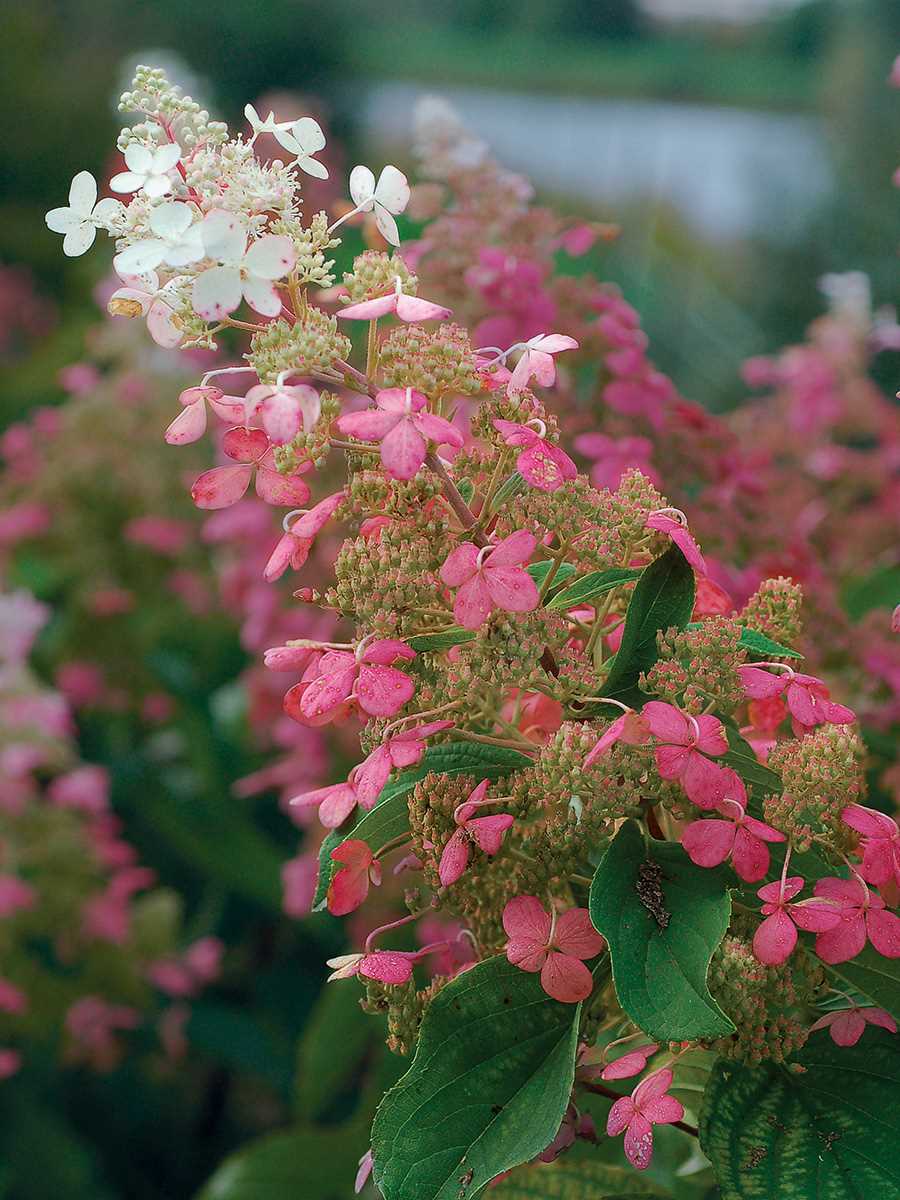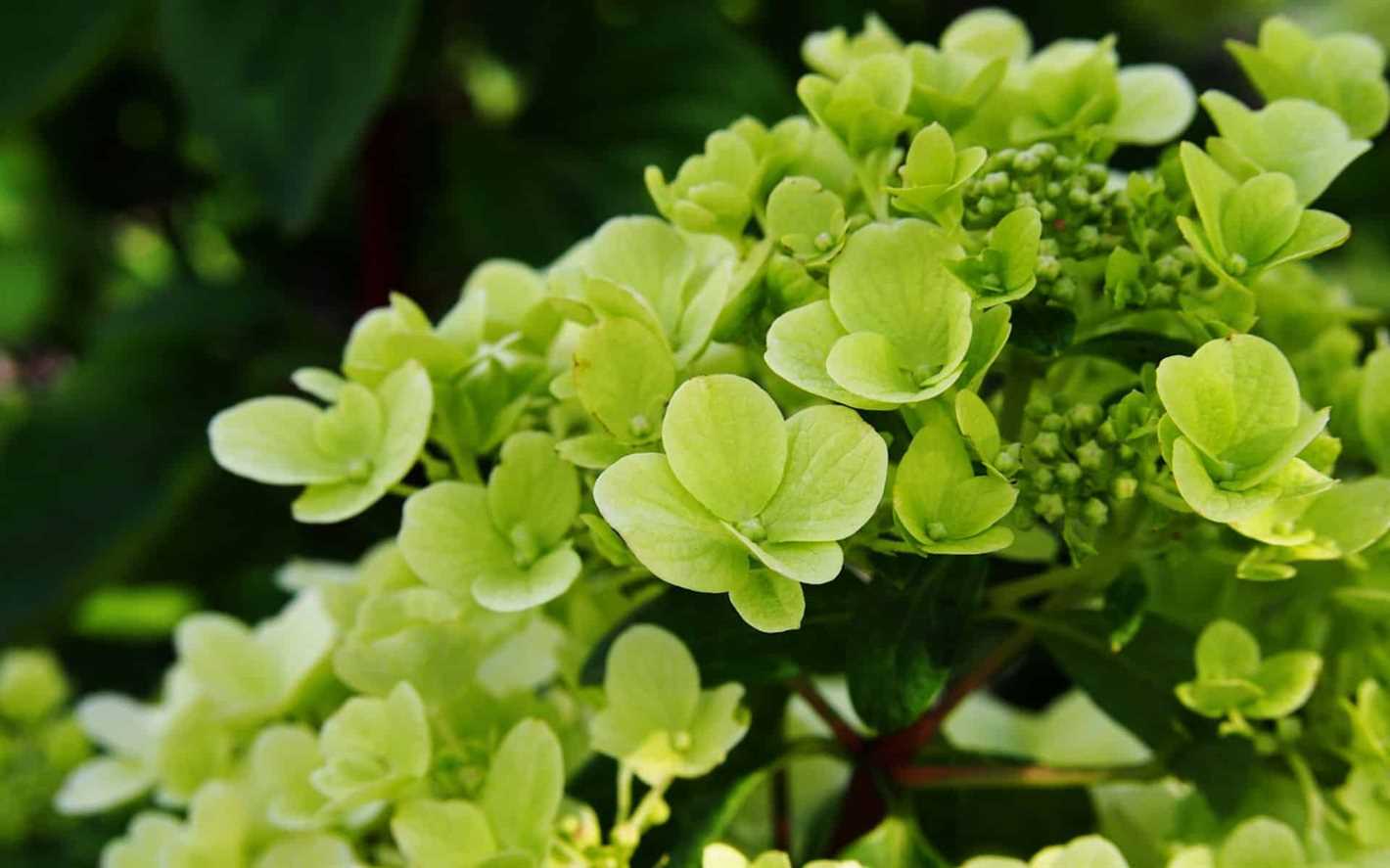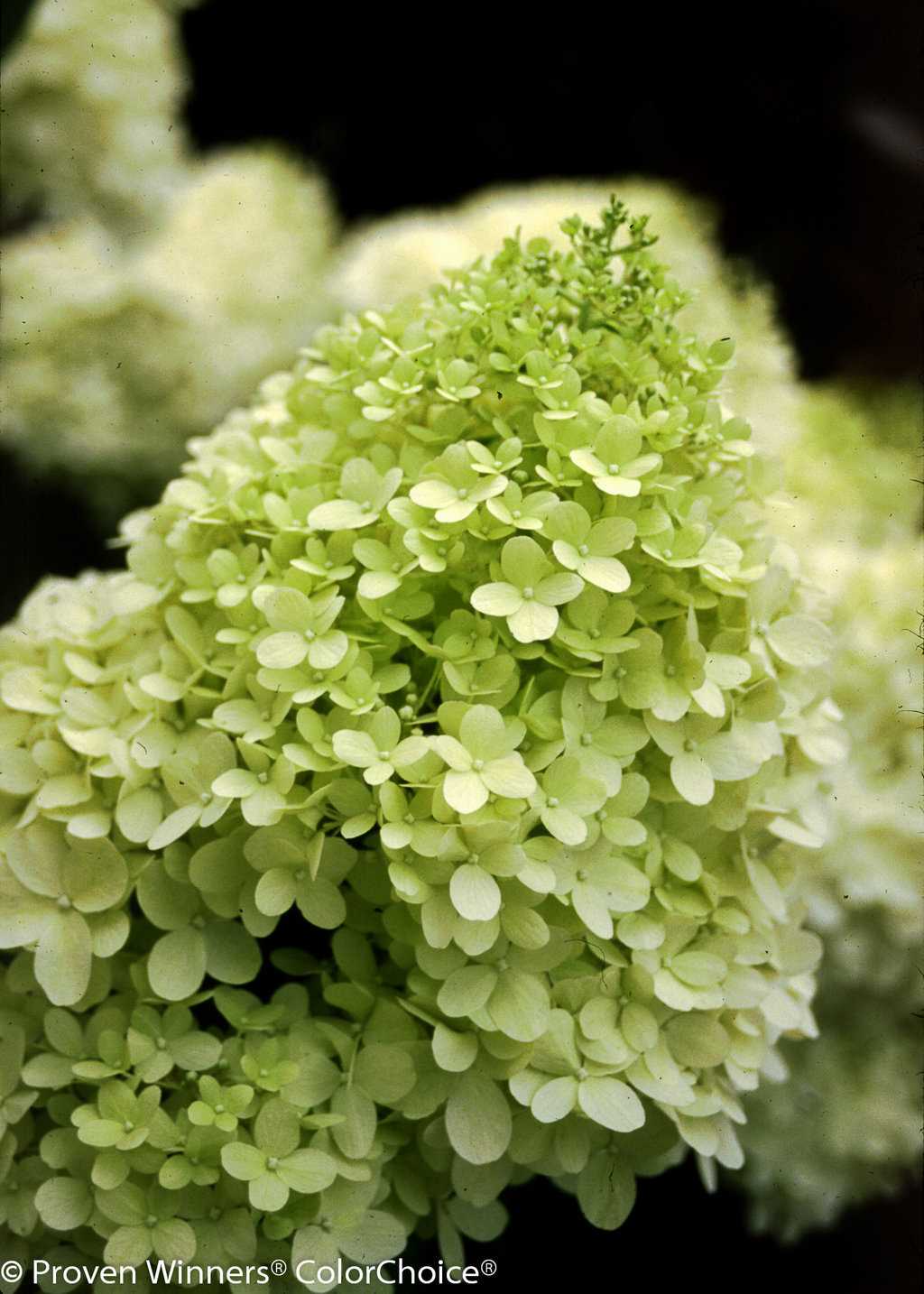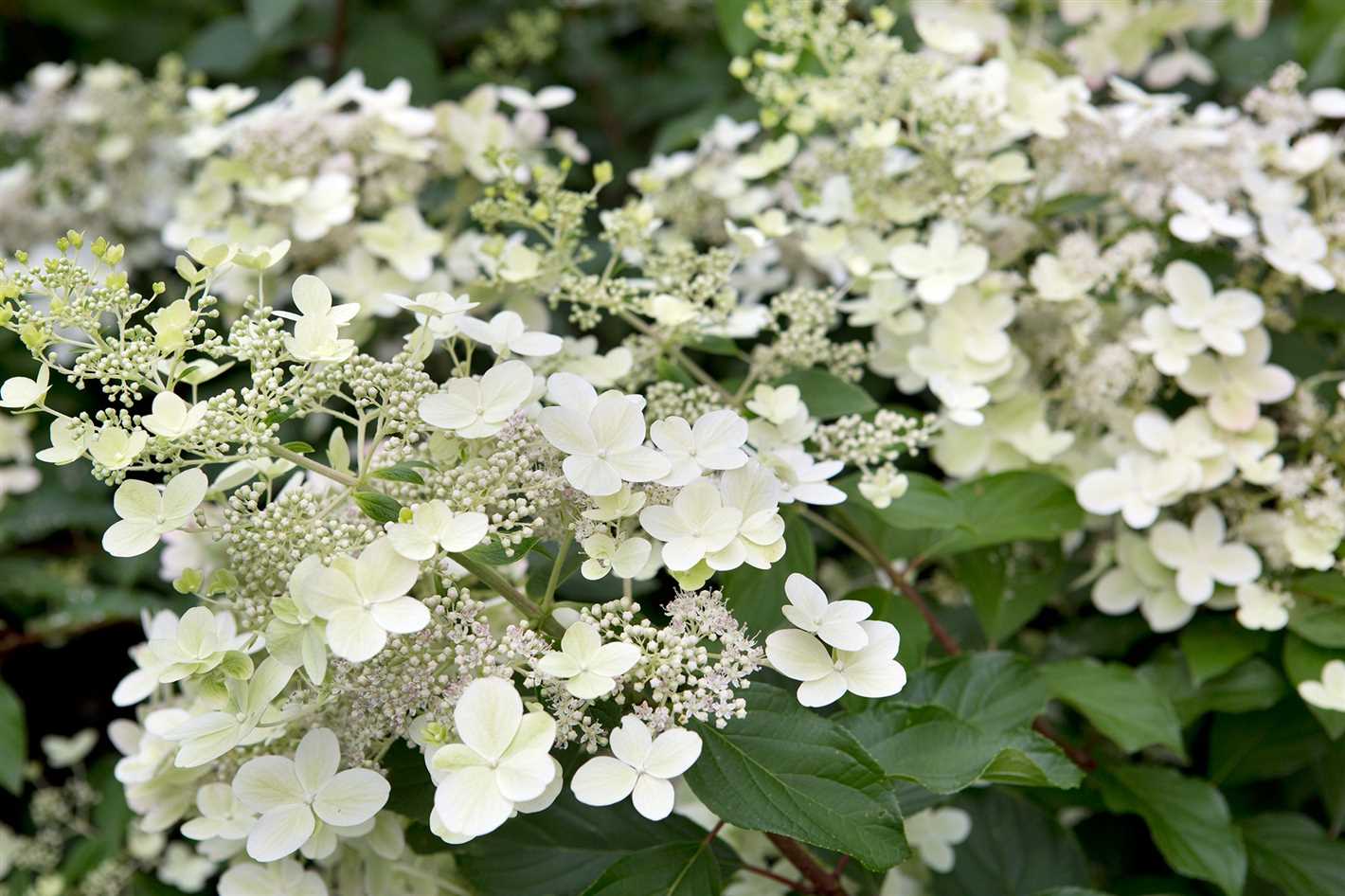- Tips for Planting Hydrangea Panicle
- Choosing the Right Location
- Preparing the Soil
- Planting the Hydrangea Panicle
- Watering and Care
- Pests and Diseases
- Choosing the Right Location
- 1. Sun Exposure:
- 2. Soil Conditions:
- 3. Space:
- 4. Protection from Wind:
- 5. Water and Drainage:
- Preparing the Soil
- 1. Choose the Right Location
- 2. Test the Soil pH
- 3. Amend the Soil
- 4. Clear the Area
- 5. Dig the Planting Hole
- 6. Backfill with Soil
- 7. Water Thoroughly
- 8. Mulch the Area
- Selecting the Right Variety
- Planting at the Right Time
- Providing Adequate Sunlight
- Sunlight Requirements
- Choosing the Right Spot
- Providing Shade
- Conclusion
- Watering and Fertilizing
- Watering
- Fertilizing
- Pruning and Maintenance
- Protecting from Pests and Diseases
- 1. Aphids
- 2. Powdery Mildew
- 3. Botrytis Blight
- 4. Japanese Beetles
- 5. Slugs and Snails
- 6. Root Rot
- Questions and Answers:
- What is a hydrangea panicle?
- What are the important considerations for planting hydrangea panicles?
- How do I choose the right location for planting hydrangea panicles?
- When is the best time to plant hydrangea panicles?
- How often should hydrangea panicles be watered?
- Can hydrangea panicles be grown in containers?
- Videos: Hydrangeas – everything you need to know about growing hydrangeas in your garden
Hydrangea Paniculata, also known as Panicle Hydrangea, is a stunning flowering plant that can bring beauty and elegance to any garden. With its large, showy blooms and lush foliage, this plant is a favorite among gardeners. However, in order to successfully grow and maintain a healthy Hydrangea Panicle, there are several important considerations to keep in mind.
First and foremost, it is crucial to choose the right location for planting your Hydrangea Panicle. This plant prefers a spot with full sun or partial shade, and well-draining soil. It is important to avoid areas with excessive moisture or standing water, as this can lead to root rot and other diseases.
Another important consideration is proper spacing. Hydrangea Panicle plants can grow quite large, so it is essential to leave enough room for their mature size. A spacing of at least 5-8 feet between plants is recommended to ensure proper air circulation and prevent overcrowding.
When it comes to planting, it is important to dig a hole that is deep enough to accommodate the root ball of the plant. Adding organic matter, such as compost, to the soil can help improve drainage and provide essential nutrients. After planting, be sure to water the plant thoroughly and apply a layer of mulch around the base to help retain moisture and suppress weeds.
Finally, ongoing care and maintenance are vital for the health and longevity of your Hydrangea Panicle. Regular watering, especially during dry periods, is important to keep the plant hydrated. Additionally, pruning is necessary to maintain the desired shape and size of the plant. It is recommended to prune in late winter or early spring, before new growth begins.
By following these tips and considerations, you can successfully grow and enjoy the beauty of Hydrangea Panicle in your garden. With proper care and attention, this stunning plant will thrive and bring joy for many years to come.
Tips for Planting Hydrangea Panicle
If you’re looking to add a touch of elegance and beauty to your garden, planting hydrangea panicle can be a great choice. With its large, showy blooms and easy-to-care-for nature, this plant is a favorite among gardeners. Here are some tips to help you successfully plant and grow hydrangea panicle in your garden.
Choosing the Right Location
Hydrangea panicle thrives in well-drained soil and prefers a location with partial sun to full sun. Make sure to choose a spot in your garden where the plant can receive at least 6 hours of direct sunlight per day. Additionally, ensure that the area provides good air circulation to prevent diseases.
Preparing the Soil
Before planting hydrangea panicle, it’s important to prepare the soil properly. The soil should be rich in organic matter and have good drainage. You can improve the soil’s fertility by adding compost or well-rotted manure. It’s also a good idea to perform a soil test to check the pH level. Hydrangea panicle thrives in slightly acidic soil with a pH range of 5.2 to 6.5.
Planting the Hydrangea Panicle
Dig a hole that is wide and deep enough to accommodate the plant’s root ball. Place the hydrangea panicle in the hole, making sure that it sits at the same level it was planted in the container. Backfill the hole with soil and gently firm it around the plant. Water the hydrangea panicle thoroughly after planting to settle the soil.
Watering and Care
Hydrangea panicle requires regular watering, especially during periods of drought. Water the plant deeply at the base, making sure to soak the soil to a depth of at least 1 inch. However, avoid overwatering as it can lead to root rot. Mulching around the plant can help retain moisture and regulate soil temperature.
In terms of care, it’s important to prune hydrangea panicle in early spring to promote new growth and maintain its shape. Remove any damaged or dead branches, as well as any crossing or rubbing branches. Additionally, applying a balanced fertilizer in early spring can help provide the plant with essential nutrients.
Pests and Diseases
Hydrangea panicle is generally a pest and disease-resistant plant. However, it can occasionally be affected by aphids, powdery mildew, or leaf spot. Regularly inspect the plant for any signs of pests or diseases and take appropriate measures to control them, if necessary.
By following these tips, you can successfully plant and grow hydrangea panicle in your garden, adding a stunning and elegant touch to your outdoor space.
Choosing the Right Location
When planting hydrangea panicle, it is important to choose the right location to ensure its growth and blooming. Here are some considerations to keep in mind:
1. Sun Exposure:
Hydrangea panicle thrives in partial sun to full sun conditions. It is best to place it in a location where it can receive at least 6 hours of direct sunlight each day. However, in regions with hot climates, some afternoon shade can be beneficial to prevent the plant from overheating.
2. Soil Conditions:
The soil should be well-draining and rich in organic matter. Hydrangea panicle prefers slightly acidic to neutral soil with a pH of 6.0-7.0. If your soil is alkaline, you can add organic matter or amendments such as peat moss to create a more suitable environment for the plant.
3. Space:
Consider the mature size of the hydrangea panicle when choosing a planting location. These plants can grow up to 6-8 feet in height and width, so make sure to provide enough space for them to spread and grow without overcrowding other plants or structures.
4. Protection from Wind:
Hydrangea panicle can be easily damaged by strong winds. Planting it in a location where it is sheltered from strong gusts or providing some type of windbreak, such as a fence or wall, can help protect the plant and prevent it from getting battered.
5. Water and Drainage:
Hydrangea panicle requires regular watering, especially during dry periods. Choose a location where you can easily provide enough water to keep the soil consistently moist but not waterlogged. Good drainage is essential to prevent root rot, so make sure the planting area has proper drainage.
By considering these factors, you can choose the right location for your hydrangea panicle, ensuring optimal growth, and a stunning display of beautiful blooms.
Preparing the Soil
Before planting your hydrangea panicle, it is important to prepare the soil properly. This will provide a solid foundation for your plant to grow and thrive. Here are some important considerations:
1. Choose the Right Location
Select a location that receives full sun to partial shade. Hydrangeas prefer at least 4-6 hours of direct sunlight each day, but they can also tolerate some shade. Avoid planting them in heavily shaded areas, as this can affect their growth and flower production.
2. Test the Soil pH
Hydrangeas prefer acidic soil with a pH level between 5.5 and 6.5. It is important to test the soil pH before planting to ensure optimal conditions for your hydrangea panicle. You can purchase a soil testing kit from a garden center or send a soil sample to a local extension office for analysis.
3. Amend the Soil
If the soil pH is too high (alkaline), you can lower it by adding sulfur or aluminum sulfate. Follow the instructions on the packaging for the recommended application rate. Additionally, you can improve the soil’s texture and drainage by adding organic matter such as compost or well-rotted manure.
4. Clear the Area
Remove any weeds, rocks, or debris from the planting area. This will prevent competition for nutrients and water and ensure that your hydrangea panicle has enough space to grow.
5. Dig the Planting Hole
Dig a hole that is about twice the width and depth of the hydrangea’s root ball. This will give the roots ample room to spread and establish themselves in the soil.
6. Backfill with Soil
Place the hydrangea panicle in the planting hole, making sure that the top of the root ball is level with or slightly above the soil surface. Backfill the hole with the soil you removed, gently firming it around the roots as you go. Avoid compacting the soil too much, as this can impede drainage.
7. Water Thoroughly

After planting, water the hydrangea panicle thoroughly to settle the soil and remove any air pockets around the roots. Continue to water regularly, keeping the soil evenly moist but not waterlogged. Hydrangeas can be sensitive to both drought and waterlogging, so proper watering is crucial.
8. Mulch the Area
Apply a layer of organic mulch around the base of the hydrangea panicle. This will help conserve moisture, suppress weeds, and regulate soil temperature. Make sure to leave a small gap between the mulch and the stem to prevent rotting.
By following these steps, you can prepare the soil for planting your hydrangea panicle and provide it with the ideal conditions for healthy growth and stunning blooms.
Selecting the Right Variety
When choosing a hydrangea panicle for your garden, it’s important to consider the specific variety you want to plant. There are several different varieties of hydrangea panicle, each with their own unique characteristics and growth habits. Here are some important factors to consider when selecting the right variety:
- Size: Hydrangea panicles come in a variety of sizes, so it’s important to choose one that will fit well in your garden space. Some varieties can grow quite large, while others stay more compact.
- Color: Hydrangea panicles can come in a range of colors, including white, pink, and shades of blue. Consider the color scheme of your garden and choose a variety that will complement it.
- Blooming time: Different hydrangea panicle varieties bloom at different times during the growing season. Make sure to choose a variety that will bloom when you want it to, whether that’s early in the season or later on.
- Hardiness: Hydrangea panicles have varying levels of hardiness, so it’s important to choose a variety that will thrive in your climate. Check the USDA hardiness zone ratings for each variety before making your selection.
- Growth habit: Some hydrangea panicle varieties have a more upright growth habit, while others have a more spreading or cascading form. Consider the overall shape and growth habit of the variety you choose to ensure it fits well in your garden and works with your desired landscape design.
By considering these factors and selecting the right variety of hydrangea panicle, you can ensure that you are planting a plant that will thrive in your garden and bring beauty and color for years to come.
Planting at the Right Time
Planting hydrangea paniculata at the right time is crucial for its successful growth and development. The ideal time to plant hydrangea paniculata is in the early spring or fall when the weather is cool and the soil is moist.
Spring:
- Planting in the spring allows the hydrangea paniculata to establish its root system before the hot summer months.
- Choose a day when the soil is not frozen or waterlogged.
- Prepare the soil by removing any weeds or grass and loosening it with a garden fork or tiller.
- Dig a hole twice as wide and as deep as the root ball of the hydrangea.
- Place the plant in the hole, making sure the top of the root ball is level with the surrounding soil.
- Backfill the hole with soil, firming it gently around the plant.
- Water the plant thoroughly after planting.
- Apply a layer of mulch around the base of the plant to help retain moisture.
Fall:
- Planting in the fall allows the hydrangea paniculata to establish its root system before the winter dormancy period.
- Choose a day when the soil is not frozen or waterlogged.
- Prepare the soil by removing any weeds or grass and loosening it with a garden fork or tiller.
- Dig a hole twice as wide and as deep as the root ball of the hydrangea.
- Place the plant in the hole, making sure the top of the root ball is level with the surrounding soil.
- Backfill the hole with soil, firming it gently around the plant.
- Water the plant thoroughly after planting.
- Apply a layer of mulch around the base of the plant to help insulate the roots during the winter.
By planting hydrangea paniculata at the right time, you give it the best chance to establish a strong root system and thrive in your garden. Remember to water the plant regularly and provide it with proper care to ensure its long-term health and beautiful blooms.
Providing Adequate Sunlight
Hydrangea Panicle plants require adequate sunlight to thrive and produce healthy blooms. When choosing a location to plant your hydrangea, it is essential to consider its sunlight requirements.
Sunlight Requirements
Hydrangea Panicle plants prefer full sun to partial shade. They typically need at least 6 hours of direct sunlight each day to grow and flower properly. However, they can tolerate some shade, especially during the hottest part of the day.
It is important to choose a planting location that receives the appropriate amount of sunlight for your hydrangea. This will ensure that it grows and develops properly, producing beautiful flowers.
Choosing the Right Spot
When selecting a spot for your hydrangea, look for an area that receives morning sun and afternoon shade. This will provide the plant with an optimal balance of light and shade throughout the day.
Avoid planting your hydrangea in areas that receive intense, direct sunlight for prolonged periods, as this can cause the plant to become stressed and wilted.
Providing Shade
If you live in a region with extremely hot summers or intense sun exposure, you may need to provide some shade for your hydrangea. This can be accomplished by planting it near taller trees or shrubs that will provide some shade during the hottest part of the day.
You can also use a shade cloth or umbrella to protect your hydrangea from intense sunlight. Be sure to remove the shade cover during cooler parts of the day to allow the plant to receive some direct sunlight.
Conclusion
Providing adequate sunlight is essential for the health and growth of your hydrangea Panicle plant. By choosing a planting location that receives the appropriate amount of sunlight and providing shade when necessary, you can ensure that your hydrangea thrives and produces stunning flowers.
Watering and Fertilizing
Water and fertilizer are crucial for the healthy growth of hydrangea paniculata. Here are some important considerations for watering and fertilizing your plants:
Watering
Hydrangea paniculata plants require regular watering, especially during dry periods. However, it’s important not to overwater them as they don’t tolerate waterlogged soil.
- Water your plants deeply once or twice a week, providing enough water to thoroughly moisten the soil.
- Ensure that the soil around the plants is well-drained and doesn’t retain excess moisture.
- Monitor the moisture levels by checking the soil with your finger. If it feels dry, it’s time to water the plants.
- Consider using a drip irrigation system or a soaker hose to provide even watering to the plants’ root zones.
Fertilizing

Fertilizing hydrangea paniculata plants is essential to promote healthy growth, abundant blooms, and vibrant foliage. Here are some fertilizer tips:
- Apply a slow-release fertilizer in early spring, following the package instructions for the appropriate amount.
- Choose a fertilizer with a higher phosphorus content to encourage flower production.
- Avoid applying excessive amounts of fertilizer, as it can lead to weak stems and excessive leaf growth.
- Reapply fertilizer after the plant has finished blooming to support overall plant health.
Remember to always read and follow the specific instructions provided by the fertilizer manufacturer. Additionally, it’s recommended to conduct a soil test to determine the specific nutrient needs of your hydrangea paniculata plants.
Pruning and Maintenance
Pruning and maintenance are important aspects of growing hydrangea panicle to ensure healthy growth and beautiful blooms. Here are some tips to follow:
- Pruning: Hydrangea panicle should be pruned in late winter or early spring before new growth begins. Prune back any dead or damaged branches, as well as any branches that are crossing or rubbing against each other. Trim back the remaining branches to a length of 12-18 inches to encourage fresh growth and robust blooms.
- Deadheading: To prolong the flowering season and encourage more blooms, it is recommended to deadhead the faded flowers. This involves removing the spent blooms by cutting their stems back to a set of leaves or a bud. Deadheading can be done throughout the blooming season.
- Fertilizing: Applying a balanced fertilizer in early spring can help promote healthy growth and abundant blooms. Use a slow-release granular fertilizer or a water-soluble fertilizer according to the manufacturer’s instructions. Avoid overfertilizing, as this can lead to excessive foliage growth at the expense of flowers.
- Watering: Hydrangea panicle requires regular watering, especially during periods of drought. Provide deep, thorough waterings rather than frequent shallow waterings. Ensure that the soil is moist but not waterlogged, as excessive moisture can lead to root rot.
- Mulching: Apply a layer of organic mulch, such as bark chips or compost, around the base of the plant. Mulching helps to retain soil moisture, suppress weed growth, and regulate soil temperature.
- Winter care: In colder climates, hydrangea panicle may require winter protection. After the first frost, mulch the base of the plant with a layer of straw or leaves to insulate the roots. You can also wrap the plant with burlap or cover it with a frost cover.
By following these pruning and maintenance practices, you can ensure that your hydrangea panicle plants thrive and reward you with their stunning blooms throughout the growing season.
Protecting from Pests and Diseases
Hydrangea panicle plants are generally resistant to most pests and diseases. However, there are a few common issues that you should be aware of and take steps to prevent or treat.
1. Aphids
Aphids are small insects that suck sap from the plant, causing leaves to curl and turn yellow. To prevent aphids, you can spray the plant with insecticidal soap or use a strong stream of water to wash them off. Ladybugs and lacewings are natural predators of aphids and can help keep their population in check.
2. Powdery Mildew

Powdery mildew is a fungal disease that leaves a white, powdery substance on the leaves and stems of the plant. To prevent powdery mildew, make sure the plants are adequately spaced to allow for good air circulation. Avoid overhead watering, as wet leaves can promote the growth of the fungus. If powdery mildew does appear, you can treat it with a fungicide labeled for use on hydrangeas.
3. Botrytis Blight

Botrytis blight is a fungal disease that causes brown spots on the leaves and flowers of the plant. To prevent botrytis blight, avoid overhead watering, as wet leaves and flowers are more susceptible to the disease. Remove and discard any infected plant material to prevent the spread of the fungus.
4. Japanese Beetles
Japanese beetles are metallic green beetles that feed on the foliage and flowers of hydrangea plants. To control Japanese beetles, you can handpick them off the plants and drop them into a bucket of soapy water. Alternatively, you can use insecticides labeled for use on Japanese beetles. Be sure to follow the instructions on the label carefully.
5. Slugs and Snails
Slugs and snails are common garden pests that can damage hydrangea plants by chewing holes in the leaves. To control slugs and snails, you can set up beer traps or use organic slug and snail pellets. You can also create a barrier around the plants using crushed eggshells or diatomaceous earth.
6. Root Rot
Root rot is a fungal disease that affects the roots of the plant, often causing them to become brown and mushy. To prevent root rot, make sure the soil is well-draining and avoid overwatering. If you suspect root rot, remove the affected plant and replace it with a healthy one.
By taking steps to protect your hydrangea panicle plants from pests and diseases, you can ensure that they thrive and continue to provide beautiful blooms throughout the growing season.
Questions and Answers:
What is a hydrangea panicle?
A hydrangea panicle is a type of hydrangea plant that produces cone-shaped flower clusters. They are known for their stunning display of large, showy flowers.
What are the important considerations for planting hydrangea panicles?
When planting hydrangea panicles, it is important to choose a location with well-draining soil and partial shade. They also require regular watering and should be planted in the spring or fall.
How do I choose the right location for planting hydrangea panicles?
When choosing a location for hydrangea panicles, look for an area that receives partial shade. They prefer morning sun and afternoon shade. The soil should also be well-draining to prevent root rot.
When is the best time to plant hydrangea panicles?
The best time to plant hydrangea panicles is in the spring or fall. This allows the plant to establish its roots before the hot summer or freezing winter temperatures.
How often should hydrangea panicles be watered?
Hydrangea panicles should be watered regularly, especially during dry periods. The soil should be kept consistently moist, but not soggy. It is important to avoid overwatering, as this can lead to root rot.
Can hydrangea panicles be grown in containers?
Yes, hydrangea panicles can be grown in containers. However, it is important to choose a container that is large enough to accommodate the plant’s root system. The container should also have drainage holes to prevent waterlogging.







